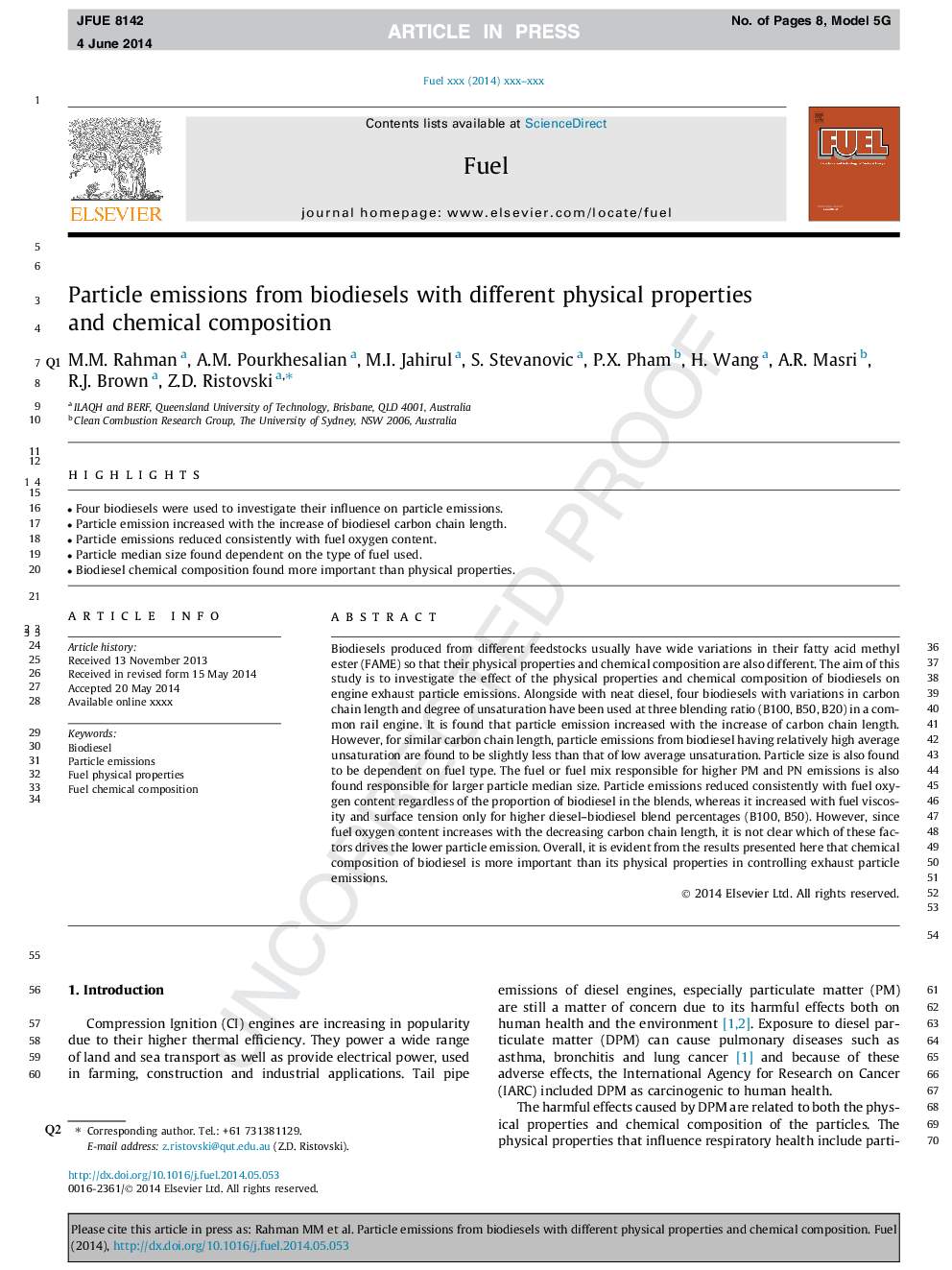| Article ID | Journal | Published Year | Pages | File Type |
|---|---|---|---|---|
| 6637033 | Fuel | 2014 | 8 Pages |
Abstract
Biodiesels produced from different feedstocks usually have wide variations in their fatty acid methyl ester (FAME) so that their physical properties and chemical composition are also different. The aim of this study is to investigate the effect of the physical properties and chemical composition of biodiesels on engine exhaust particle emissions. Alongside with neat diesel, four biodiesels with variations in carbon chain length and degree of unsaturation have been used at three blending ratios (B100, B50, B20) in a common rail engine. It is found that particle emission increased with the increase of carbon chain length. However, for similar carbon chain length, particle emissions from biodiesel having relatively high average unsaturation are found to be slightly less than that of low average unsaturation. Particle size is also found to be dependent on fuel type. The fuel or fuel mix responsible for higher particle mass (PM) and particle number (PN) emissions is also found responsible for larger particle median size. Particle emissions reduced consistently with fuel oxygen content regardless of the proportion of biodiesel in the blends, whereas it increased with fuel viscosity and surface tension only for higher diesel-biodiesel blend percentages (B100, B50). However, since fuel oxygen content increases with the decreasing carbon chain length, it is not clear which of these factors drives the lower particle emission. Overall, it is evident from the results presented here that chemical composition of biodiesel is more important than its physical properties in controlling exhaust particle emissions.
Keywords
Related Topics
Physical Sciences and Engineering
Chemical Engineering
Chemical Engineering (General)
Authors
M.M. Rahman, A.M. Pourkhesalian, M.I. Jahirul, S. Stevanovic, P.X. Pham, H. Wang, A.R. Masri, R.J. Brown, Z.D. Ristovski,
